Overview
- The United States is a vast country in North America with 50 states covering Alaska in the northwest and Hawaii in the Pacific Ocean. It is spread in the total area of 3.8 million square miles. The USA is the world’s 3rd largest country by total area.
- USA is the 3rd highest populated nation in the world. Washington, D.C., is the capital of the country capital & New York City is its most populated city.
- With a strong democratic tradition, the government system of USA is a constitution-based federal republic. Its chief of state and head of government is the president. The United States has an advanced mixed economy in which there is a variety of private freedom, combined with centralized economic planning and government regulation. United States is a member of the Asia-Pacific Economic Cooperation (APEC) and the North American Free Trade Agreement (NAFTA).
- The United States is a hugely developed country. It is the world’s largest economy by nominal GDP. By value, the United States is the world’s biggest importer and the second-biggest exporter of goods. The most important imports of USA are Vehicles, Military Equipments, Chemical Products, Electrical Machinery, computers, Live Animals & Food. Also the country is the world’s biggest coal reserve holder.
- The GDP of USA went up by 2.3% in the year of 2019. The unemployment here reached to a 50 year low in the same year, and approximately 2.1 million new jobs were added.
- The quality & standard of teaching is the main aspect for what the Universities in America is very well known for. For the students seeking higher education overseas, USA is the top and biggest destination. Currently approx 30% of the total international students study in the USA.
- At Flamingo Educare, we not only help you choose the right academic institution for you but also provide honest career guidance to help you make a life in the USA by improving your overall employability. We represent more than 40 universities across USA which include some of the most prestigious Universities like California Institute of Technology, New York Institute of Technology, Oklahoma State University, Texas Health & Science University and many more.
Fast Facts
- Official Name :United States of America
- Capital :Washington, D.C.
- Population :32.82 crores (2019)
- Official Language :English
- Money :United States Dollar
- Area :3,796,742 sq mi (9,833,520 km2)
- GDP :Total - $20.8 trillion (2020 est.)and Per Capita - 63,051 (2020 est.)
Why Study In USA?
-
U.S. degrees have an excellent international reputation:
USA has an excellent international reputation and topmost universities. Continue to manage a powerful presence among the best ranked education institutions in the world. Partially this has to do with how well-funded and supported American universities are, but it also has to do with the great academic standards and exact requirements that they instil in their students.
-
American universities are bastions of cultural diversity:
Nearly each university in the U.S. takes variety to be one of their defining pillars. Historically, there has been a great effort within the structure of these higher education institutions to increase the number of educational opportunities and make cultural diversity central to the admission and enrollment efforts.
-
U.S. universities offer excellent support facilities:
In an effort to make your transition to a united states university effortless, these institutions give enough support to ready international students for their classes. Through different workshops, orientations, English-language practice courses and training, international students are given plenty of help to get them ready for their classes.
-
U.S. universities invest in optimised classroom experiences:
As technology continues to initiate and change the way that knowledge is delivered, university classrooms are trying to keep in step with the rapid acceleration of ideas. By giving students more connection to web-based classes, utilising computer-based exams, and permiting students to use various labs and resources, universities are able to give you the latest and most latest modern classroom experience that you can imagine.
-
American universities offer a flexible academic environment
Studying abroad in America give an ideal environment for students, characterized by bendable methods of education and continuous development process for students in the different fields of studies.
-
Emphasis on internships & career advancement:
Universities in the United States offer internship programs as a way to quick start your professional career. Many students obtain internships during their college period to take benefit of hands-on experience and get access to good-paying jobs after graduation. Whether you want to come back to your home country after graduation or wanted to work in the United States to work full time, your U.S. education will undoubtedly be the beginning point for a successful career.
Do you have questions regarding Study In USA ?
Top Universities
 Established in : 1838 Approx Fees : USD 28,276 - USD 32,002 |
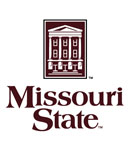 Established in : 1905 Approx Fees : 7,588 USD - 15,898 USD |
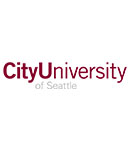 Established in : 1973 Approx Fees : USD 5,400 |
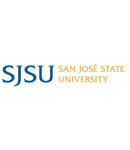 Established in : 1857 Approx Fees : 7,852 USD - 19,732 USD |
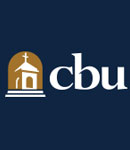 Established in : 1950 Approx Fees : USD 33,930 |
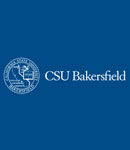 Established in : 1965 Approx Fees : USD 36,911 |
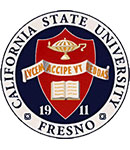 Established in : 1911 Approx Fees : 33,596 USD |
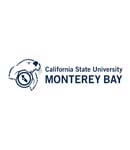 Established in : 1994 Approx Fees : USD 7,143 - 19,023 USD |
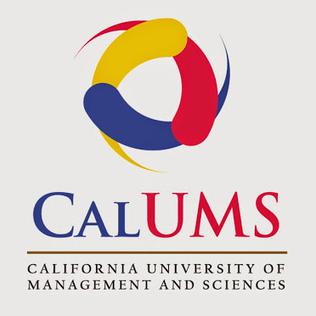 Established in : 1998 Approx Fees : USD 20,000 - 37,950 USD |
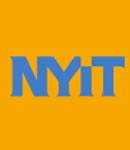 Established in : 1955 Approx Fees : USD 19,030 |
Top Courses In USA
Popular Courses To Study In The USA
-
Business management
Business Management is that branch of education which provides knowledge and training related to planning, supervision, execution, & analysis of a business enterprise. In this field of education, you learn about the establishment of an organization or a company, and various levels of function such as finance, production, administrative, sales & marketing, human resources, etc.
-
Engineering
An Engineering Technology degree gives emphasis on the application of specific engineering techniques. Engineering Technology degree often gives employment in the fields of design, production, operations and manufacturing.
-
Computer Science and Information Technology
Computer Science and Information Technology encloses a huge diversity of various subjects which are related to applications and computation such as software design, e-commerce, development of algorithms, Mobile Application Developing, analysis of algorithms, Data Analytics, programming languages, computer hardware, Machine Learning, Web Technology, Block Chain Technology and similar.
-
Business Analytics and Data Science
Business analytics fills the space between information business & technology with the help of analytics which provide data driven guidance. This needs an in dept knowledge for understanding the statistics, data and computer science. The study of algorithms, technology and is Data science. It is a method where use of data for solutions and results for solving the problem is used.
-
Pharmacy
Pharmacy is much more than a drugstore. Along with Pharmacy students can also study development and research of medicine for their option of career.
-
Law
A law degree is an academic degree concerned with legal careers. General skills include the research, explanation and interpretation of complex subjects, analytical thinking, good communication, practical problem solving, teamwork, negotiation, detailed attention and the skill to draft formal documents.
-
Physical and Life Sciences
Physical science is related to the study of sciences like chemistry, physics, astronomy, earth science; the inanimate things. Life science is related to the study of living organisms, plants, animals. Humans, and microorganisms.
Do you have questions regarding Study In USA ?
Cost Of Study
|
Sr. No. |
Study Program |
Average Fee (in Euros*) |
|
1 |
School | Tuition fees in USD (indicative) |
|
2 |
English language studies | $700 to $2,000 a month |
|
3 |
Community colleges | $6,000 to $20,000 per year |
|
4 |
Undergraduate bachelor degree | $20,000 to $40,000 per year |
|
5 |
Graduate programs | $20,000 to $45,000 per year |
|
6 |
Doctoral degree | $28,000 to $55,000 per year |
Please note: An MBA degree can cost significantly more, as can professional programs such as law, medicine, dentistry, some design programs, etc. Most doctoral degrees are 100% funded through research/teaching assistantships, research aid and bursaries.
Where can the student stay? And whats can be the accommodation cost?
- Most universities in the US offer on-campus residence to foreign students. Living as a resident on-campus is a very economical option, but, you need to apply for it individually, and well ahead in time to secure a slot for yourself.
- You can also go for off-campus accommodation whereas you can share apartments with other students from India or stay with a homestay with a local family. In such cases, you should be ready to adjusting to a different lifestyle than India. Remember, the rentals depends from city to city.
- If you go for rent an apartment, you will have to pay additionally for utility bills like electricity, water usage, internet and also tenant’s insurance. In most cases, universities help the students in finding accommodation, both off-campus as well as on-campus. The accommodation cost in the US varies by area and lies somewhere between $6,000 and $14,000 per year.
Living Expenses :
For your emergencies, grocery shopping and social activities you need to keep a little money separately. If you are living in out of country for study, it is always suggestible to keep track of your expenditure so that you will not overspend. Considering diversified expenses and living costs, a single student budget in the US comes out approx US$ 10,000 and US$ 25,000 per academic year (indicative) depending on the city they choose to stay. You should also consider these common expenses when preparing your budget:
|
Expenses |
Average yearly cost* |
|
Books and Stationery |
$500- $1000 |
|
Travelling |
$500- $1200 |
|
Food |
$2500 |
|
Clothes and footwear |
$500 |
| Miscellaneous expenses |
$2000 |
*Note: All costs indicative and vary from region to region
Do you have questions regarding Study In USA ?
Career Opportunities In USA
State Of Economy
- The economy of the United States is that of a remarkably developed country with a diverse economy. It is the world’s biggest economy by nominal GDP and net wealth and the second-biggest by purchasing power parity (PPP).
- It has the world’s 5th-highest per capita GDP (nominal) and the 7th-highest per capita GDP (PPP) in 2020. The USA has the greatest technologically and strong economy in the world and its firms are at or near the forefront in technological advances, specially in pharmaceuticals, computers and medical, aerospace, and military equipment.
- The biggest U.S. trading partners are Canada, China, Japan, Mexico, Germany, South Korea, United Kingdom, France, India, and Taiwan. The U.S. is the world’s biggest importer and the 2nd-biggest exporter. It has free trade agreements with several nations, including NAFTA, South Korea, Australia, Israel, and few others that are in effect or under negotiation.
- The U.S. dollar is the currency majorly used in international transactions and is the world’s foremost reserve currency, backed by its economy, its military, the petrodollar system and its linked eurodollar and large U.S. treasuries market.
- U.S. total trade amounted to USD 4.2 trillion in 2018. Of the world’s 500 biggest companies, 121 are headquartered in the U.S. The U.S. has the world’s maximum number of billionaires with total wealth of USD 3.0 trillion. US commercial banks had USD 20 trillion in assets as of August 2020. US Global assets under management had more than USD 30 trillion in assets.
- The New York Nasdaq and Stock Exchange are the world’s largest stock exchanges by market capitalization and trade volume. Foreign investments made in the U.S. total almost USD 4.0 trillion, while American investments in foreign countries total over USD 5.6 trillion.
- U.S. employment, as approximated in 2012, is divided into 79.7% in the service sector, 19.2% in the manufacturing sector, and 1.1% in the agriculture sector.
How Is The Job Market In The USA?
By the month of September 2020 last business day , there were around 6.44 million job openings in the USA. The key sectors are:
- Business Services (Marketing & Advertising, Accounting & Legal)
- Construction & Real Estate Services
- Health Care
- Trade & Transportation (Transportation & Logistics, Wholesale)
- Engineering
- Food Services
- Law
- Manufacturing
- Education (Professor, Research Assistant, Teachers)
- Media
In the United States, the work environment is causal and professional as well. The office environment is informal, and there is no apparent hierarchy between managers and their junior. Employees are treated as equals and independent ideas are welcomed.
American work culture plans lots of meetings. These meetings need not deal with great decisions, but are more like discussions/conversation, and are focus on planning, analyzing and reviewing of a project. Working hrs are flexible as far as IT companies are concerned. Usual office timings go from 9 AM to 5 PM. If you are a contractor, then you do need to maintain a minimum of 8 hrs per day or 40 hrs per week.
What Are The Average Salaries In The USA?
- Real Estate Agent. Average salary: USD 53,800. Realtors in the United States are some of the happiest workers across the country.
- HR Manager. Average salary: USD 64,800.
- Construction Manager. Average salary: USD 72,400.
- IT Consultant. Average salary: USD 77,500.
- Teaching Assistant. Average salary: USD 33,600.
Workers holding Doctorate Degree degrees enjoy the topmost average gross salaries in United States. With an earned Doctorate Degree, they grosses USD 124,970. While Workers with Bellow H. School education earn the least, with an average gross income of USD 54,341. This is 129.97% lower of what Doctorate Degree degree holders earn.
What Are The Top Trending Jobs Or Careers In The USA?
- Software developers and software quality assurance analysts and testers.
- Registered nurses.
- General and operations managers.
- Financial managers.
- Medical and health services managers.
- Nurse practitioners.
- Market research analysts and marketing specialists.
- Management analysts.
- Lawyer.
- Sales manager.
- Business operations manager.
- Pharmacist.
- Financial advisor.
Do you have questions regarding Study In USA ?
Immigration & Settlement In USA
How many years of post study work can i do in the USA?
The vast majority of foreign students in the United States have an F-1 student visa. The F-1 entitles you to apply for Optional Practical Training (OPT) at the end of your course. This permit you to stay in the US for up to a year to apply the knowledge you have grasped through work related to your main field of study.
If you have a degree from the government’s designated list of STEM subjects you will probably be qualified to extend your OPT by another 17 months, means you can stay in the US for up to 29 months after graduation or after finishing your studies. The extension is designed to give you time to get a permanent job offer and sponsorship from an US employer, which permits you to apply for the H1-B, a more long-term visa.
What Is The Possibility & Process Of Pr
There are three ways to stay back in the USA after completing your studies with F-1 student visa.
- OPT ; Optimal Practical Training – it is temporary employment authorization. The employment should be in relation to the field of your F-1 study.
- Non Immigrant work visa; The H-1B visa is a nonimmigrant visa. This will allow temporary work permit in high-skilled occupations. Mainly they are the areas like engineering, Science and IT.
- E-1/E-2 Treaty Trader & Investor; here the immigrants of the countries having a treaty between them are allowed. It is a treaty of commerce of trading goods.
Can I Work While Studying In The USA ? What Are The Wages ?
- Foreign students can work in the USA during studying but there are some restrictions.
- Foreign students who have an F-1 and M-1 visa are permitted to work on-campus such as working in the cafeteria, students centre or library.
- Students are not permitted to work off-campus while their first academic year. Students can work off campus after the completion of first academic year with the help of various programs which are designed specifically for international students. Which are:
- Optional Practical Training (OPT)
- Science, Technology, Engineering, and Mathematics (STEM)
- Optional Practical Training Extension, and Curricular Practical Training (CPT)
- Some basic jobs will give you an approx $7.00to $9.00 per hour, but if you are at any highly skilled positions than you may also get $10 or more per hour. Students in USA are allowed to work on campus for about 20 hours a week during the school session is on. And they can work full time during school breaks. Full time is 40 hours a week. A few jobs also allow working overtime, but it completely depends on the job.
What Is H-1B Visa?
The H1B visa is a type of visa which is an employment-based as well as non-immigrant visa for temporary workers in the USA. The employee should get the offer from the employer based in USA and apply for H1B petition in the US Immigration Department. Once the petition is approves, it is the permit with gets you a visa stamp and work in the USA for working for that employer.
How Can I Become A Permanent Resident In The USA ?
A Green Card is a permanent immigrant visa, permitting you to stay in America indefinitely. Applying for one is a more difficult and lengthy process.
There are various ways to immigrate to the US. The most relevant for a foreign graduate is through a job. Most commonly it is the employer who applies on the grounds that you are an outstanding employee, researcher or professor. However, there are other routes, including self-petition.
How To Become A Citizen Of The USA ?
Many permanent residents want to become USA citizen. This is not an automatic process. It is one that you must be applied for. Individuals who have been U.S. permanent residents for a certain period of time are qualified to apply for citizenship.
If someone becomes a permanent resident they are well on the way towards becoming a U.S. citizen if they so choose. Generally speaking, an individual must meet certain eligibility requirements before being able to apply for their application.
Do you have questions regarding Study In USA ?
Education System
What Are The Various Intakes Of Admission In The USA?
American colleges and universities offer 3 intakes. In some universities, intakes may also be introduced as a semester. The 3 intakes available in the US are:
- Fall: A most popular intake in Indian students, The Fall intake begins in the month of September
- Spring: begins in the January; it’s best if you miss the September intake
- Summer: Applicable for limited programs and colleges, the summer intake usually begins around May
Which Are The Different Types Of Programs/Degrees Available In The USA ?
Many students those who are going to pursue their higher education in the US must be surprised to know that the US has no educational system. The Federal government can influence education only by the funding it proposals, but this is limited. Unlike CBSE board examinations in India, there is no nationwide high school graduation examination. There are, still state graduation examinations, and students must pass these.
- Associate degree- 2 years
- Job oriented programs that permit a graduate to launch a career, it is also equivalent to first 2 years of a 4-year bachelor’s degree
- Bachelor’s degree- 3 – 4 years
- Undergraduate degree that includes core courses, main, minor and elective. The 4 years are known as Freshman, Junior, Sophomore and Senior.Master’s degree (Professional)- 1 to 3 years Leads students from first degree to particular profession; duration depends on field of study
- Master’s degree (Academic)-2 years
- Normally awarded in traditional disciplines of humanities, science and arts may lead students to doctoral programs
- Doctorate or PhD- 5 to 8 years
- Finished under the supervision of faculty advisor, PhD is awarded on completion of dissertation and successful defence before a panel of faculty members.
Which Are The Types Of Higher Education Institutes In The USA?
-
State School/college/University
The US consists of 50 states, each state-run at least 1 university or colleges for providing quality higher education to students at reasonable rates. These universities are financed by the respective state governments and are equipped with state of the art facilities. E.g. Texas A&M University or the University of California.
Private university/college
These institutions are run privately and are considered expensive as compared to state schools.
-
Community Colleges
Community colleges offer 2-year certification or associate degree which is transferable. Normal, Community college graduates transfer to universities or 4-year colleges in order to finish their degree. They are permitted to transfer the credits which they have earned in the community college. Community colleges present ESL courses or other programs that prepare students for studying university-level courses.
What Entrance Exams Are Required To Study In The USA ?
Major graduate and undergraduate programs will require the TOEFL exam for all foreign students to make sure that they have enough proficiency in English to benefit in United States colleges. All patterned tests listed here are given in English.
For undergraduate admissions, need standardized tests generally include:
- Scholastic Assessment Test (SAT)- SAT is a patterned test administered by the College Board and is necessary to be taken by pupils seeking admission to undergraduate schools. SAT full form is the Scholastic Assessment Test, which was previous known as the Scholastic Aptitude Test. SAT exam has been developed to access the verbal, written and mathematical skills of the applicants. Candidates aspire to pursue undergraduate courses, specially in the US and Canada, are need to take the SAT exam.
- Test of English as a Foreign Language (TOEFL)- The TOEFL test is plan to measure English skills relevant to an academic classroom. There are 2 variations of the test: Internet and Paper. The TOEFL paper based test (PBT) is being phased out by ETS, with 96% of TOEFL test takers globally now taking the internet-based Test (iBT).
- American College Testing (ACT)- The ACT is a national college admissions examination. ACT (No Writing) consists of 4 multiple-choice tests: English, Reading, Mathematics, and Science. The ACT plus Writing contains the four multiple-choice tests and a 30-minute Writing Test.
- IELTS: IELTS United States of America arrange information and support to organizations that use IELTS to measure the English language proficiency of foreign applicants, and works with United States stakeholders to increase the number of academy and programs that use the test throughout the United States. IELTS USA handle the administration of IELTS test exercise across the United States test center network by arranging training and support to official testing centers across the United States.
For professional and graduate admissions, required tests generally comprise:
- Law School Admission Testing Program (LSAT) – for law schools
- Dental Admission Testing Program (DAT) – for dental schools
- Medical College Admission Test (MCAT) – for medical schools
- Optometry Admission Testing Program (OAT)
- Pharmacy College Admission Test (PCAT)
Do you have questions regarding Study In USA ?
Visa Process & General Requirement For UK
Arriving at the United States as an international student, there are three distinct student visas that you could be issued: F1 Visa, J1 Visa or M1 Visa. The F1 and J1 visas permit for the possibility of employment in the US during your stay, while the M1 Visa does not.
Visa Descriptions:
F-1 Visa
This is the most usual type of student visa. If you want to engage in academic studies in the United States at an authorized school, like an accredited U.S. college or university, private secondary school, or approved English language program then you may require an F-1 visa. You will also require an F-1 visa if your course of study is greater than 18 hours a week.
How Long You Can Stay With The F-1 Visa In The USA ?
60 days
When you arrive in the US, an immigration officer at the arrival port will grant you an I-94 card that signifies your non-immigrant status (F1) and your authorized stay. It is commonly “Duration of Status” or “D/S” on a student’s I-94 card, meaning that you may stay in the U.S. as long as you are enrolled in the school to finish your academic program. After the program finishes you will have 60 days to leave the U.S.
How Long Does It Take To Apply For Student Visa For Study In USA ?
The time that it takes to apply for a F1 student visa differ with individuals and circumstance. The entire process can take as short as 1 week, but may also extend to a few months for more complex cases.
There are various key steps in the application process that may require more time, and you should take note of these:
- Scheduling a visit to the US embassy typically takes approx 3 days, but do expect a longer wait if the US embassy is experiencing high volume
- Application processing time could vary between 3 day to a few weeks depending on volume
- If the embassy finds issues with your application, the processing time may stretch up to a few months
What Is The Usa Student Visa Requirements (F1 VISA) ?
You will usually need the following for your US Student Visa application:
- A valid passport with a validity date at least 6 months beyond your period of stay
- Recent passport size photograph
- Confirmation page of DS-160
- Form I -20
- Payment of application fees for SEVIS
- Application as a non-immigrant
- Your University will make you aware of extra requirements if any prior to your application
USA Student Visa Requirements (F1 Visa)
You will usually need the following for your US Student Visa application:
- A valid passport with a validity date at least 6 months beyond your period of stay
- Recent passport size photograph
- Confirmation page of DS-160
- Form I -20
- Payment of application fees for SEVIS
- Application as a non-immigrant
- Your University will make you aware of extra requirements if any prior to your application
After You Graduate:
- F1 visa holders are eligible for up to 12 months of OPT (optional practical training) on completion of graduation. That means you can work for a year after you completion your studies
- It is temporary employment permission allowing students the opportunity to gain practical experience in their field of study.
- After that, you will be required to apply for a work visa if you have to extend working in the US. You can remain in the US up to 60 days after the finishing of your course even if you don’t have a job offer or haven’t applied for OPT.
What Are The Requirements For Visa Application ?
- You have applied for non-academic or vocational training courses in the United States.
- You must have the minimum education qualification required for admission into the vocational course.
- You were admitted by a United States based educational school and got the Form I-20.
- You have the suitable level of proficiency in English
- You’ve shown you’ve got enough funds to cover your expense while you’re in the United States.
- You have PR in your nation of origin
- You have no intention of remaining in the US and will leave after your education is finished
- The institution is convinced that the education you are receiving will benefit your nation of origin
What Documents Required For Application Of Student Visa For USA ?
- Passport valid for at least six months
- DS-160 confirmation
- Visa appointment letter
- Recent photographs
- Fee receipts
- Educational certificates
- Proof of financial stability
What Are The Eligibility Conditions ?
To be eligible for Sponsorship on the J-1 Intern Visa, Intern must have secured an internship with a company in the US in any one of the following area:
- Agriculture, Forestry, and Fishing;
- Arts and Culture;
- Construction and Building Trades;
- Education, Library Science, Social Sciences, Counseling and Social Services;
- Health-Related Occupations;
- Hospitality and Tourism;
- Information Media and Communications;
- Management, Business, Commerce and Finance;
- Public Administration and Law; and
- The Sciences, Engineering, Architecture, Mathematics and Industrial Occupations.
Applicants must also:
- Have proficiency in English
- Be ready to leave the USA within 30 days of the program being completed. The USCIS is granting this time to allow planning for the return to home. Applicants may not continue the program or finish it, nor work during this 30-day time. They may, however, travel within the United States
Do you have questions regarding Study In USA ?
General Information
Climate
- The overall climate in the United States of America is moderate, with notable exceptions. Hawaii and South Florida have a tropical climate and Alaska has an Arctic tundra climate. The Great Plains are dry, grassy and flat, turning into arid desert in the far West coast.
- The climate of the United States differs because of changes in latitude, and a range of geographic features, including deserts and mountains.
- Generally, the climate of the U.S. becomes warmer on the mainland and drier the further west, until one reaches the West Coast.
- West of 100°W, much of the U.S. has a cold semi-dry climate in the interior upper western states, to warm to hot desert and semi-dry climates in the southwestern U.S. East of 100°W, the climate is humid continental in northern region, transitioning into a humid temperate climate from lower Midwest east to the Middle Atlantic states (Virginia to southern Connecticut) and the Southern Plains.
Popular Cities To Study In The USA
Boston: Boston is highest populated city of the Commonwealth of Massachusetts in the US and the 21st highest populated city in the US. The city proper covers 48.4 square miles with an approx population of 692,600 in 2019. Boston rated 8th in the entire world for Best Student Cities in 2017 and this is the only American City in the top 10. Because of its extremely high number of schools per capita, Boston’s old nickname was the Athens of America still rings true. With over 20 institutes of great learning in the Boston area, including MIT, Harvard, and Tufts, it seems fitting that our mayor express Boston as “the world’s capital of learning.”
New York: New York City consist of 5 boroughs sitting where the Hudson River link the Atlantic Ocean. Manhattan is heart of New York, a densely populated borough that’s among the world’s main commercial, cultural and financial centers.
New York has best universities in the worldwide, including Ivy League institutions. There are more than 70 universities in the state of New York, with many of these situated in the city.
Universities in New York cover a great range of subjects and include specialist institutions covering medicine, business, engineering, law, and many others.
San Francisco: San Francisco is a the County and City in San Francisco and it is the commercial, cultural and financial center of Northern California. San Francisco is the 16th topmost populated city in the USA, and the 4th topmost populated in California, with 881,549 residents as of 2019.
Universities in San Francisco provide a ample range of specializations for all levels of proficiency, Bachelor’s, PhD (doctoral studies) and Master’s. Local higher educational institutions are especially known for business, health care, law and computer science subject areas. You can still specialise in politics, economics, media, communications, project management, engineering and more.
Chicago: Chicago is on Lake Michigan in Illinois and it is among the biggest cities in the U.S. Famed for its unique architecture, it has a skyline sprinkle by skyscrapers such as the ideal John Hancock Center, 1,451-ft. Willis Tower and the neo-Gothic Tribune Tower. The city is also famous for its museums, including the Art Institute of Chicago with its noted Impressionist and Post-Impressionist works.
You can specialise in any subject area you can think of, for any degree level In Chicago: Bachelor’s, PhD and Master’s, research studies and professional degree study programmes. Some of the topmost popular courses you could study in Chicago include: law, medicine, social sciences, public policy, business, economics, biological sciences, journalism, engineering, communications, finance and more.
Los Angeles: Los Angeles is a vast Southern California city and the center of the nation’s film and television industry. Near its ideal Hollywood sign, studios such as, Universal and Warner Brothers present behind-the-scenes tours. On Hollywood Boulevard, TCL Chinese Theatre showing celebrities’ hand- and footprints.. Choose from thousands of value study programmer with undergraduate programmes present flexible area of interest to major in. Take a topmost Master’s or conduct doctorate level research in well-equipped facilities regardless of the PhD course you choose to pursue.
Washington DC: Washington, DC is capital of U.S. and it is a crowded city on the Potomac River, neighboring the states of Virginia and Maryland. International students interested in studying in Washington, D.C. have various topmost-ranked programs and private universities from which they may choose to pursue their education in USA.
Philadelphia: Philadelphia is Pennsylvania’s biggest city in USA and it is famous for its rich history, you can see the Liberty Bell, Independence Hall and other American Revolutionary sites. In Philadelphia you can choose Bachelor’s degree programme and choose whether you want to do a major courses, a minor courses, a certificate or a concentration. You can earn your undergraduate degree in education, accounting, business, law, civil engineering, classics, international studies, medical sciences, art and many others.
Do you have questions regarding Study In USA ?
